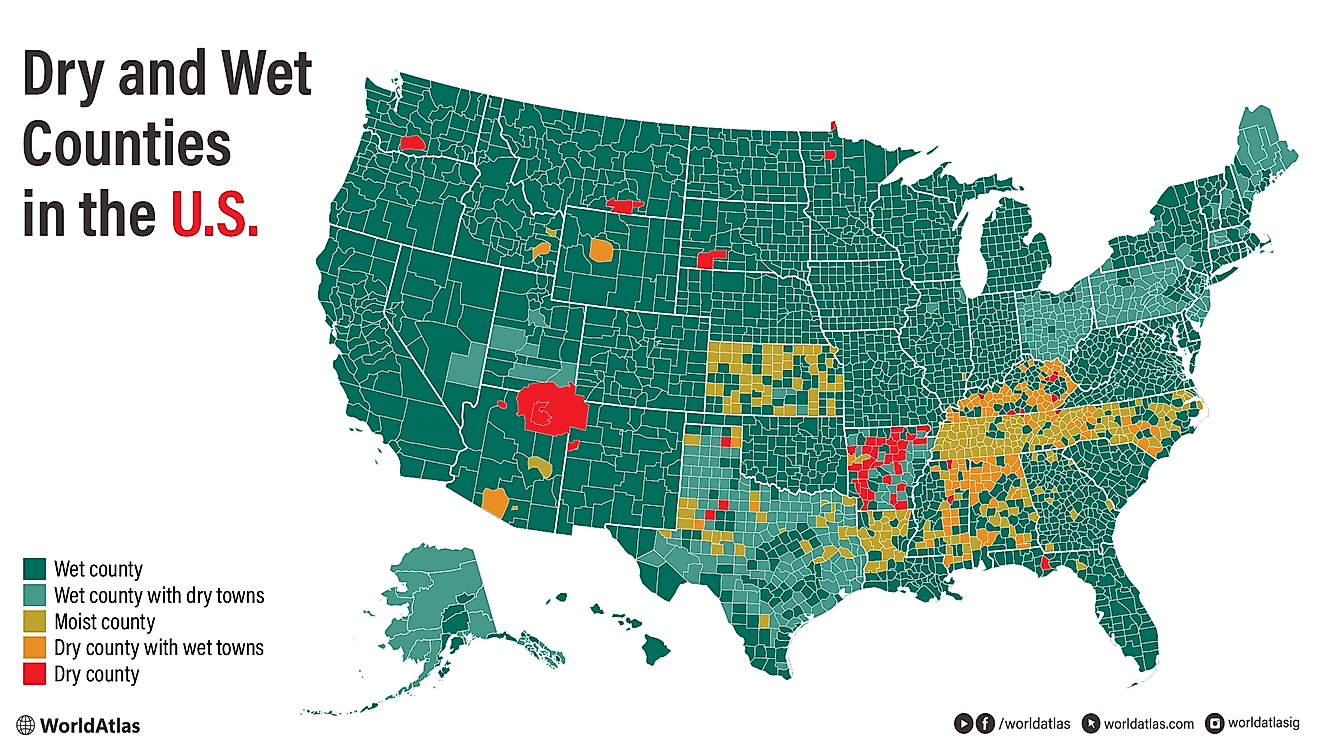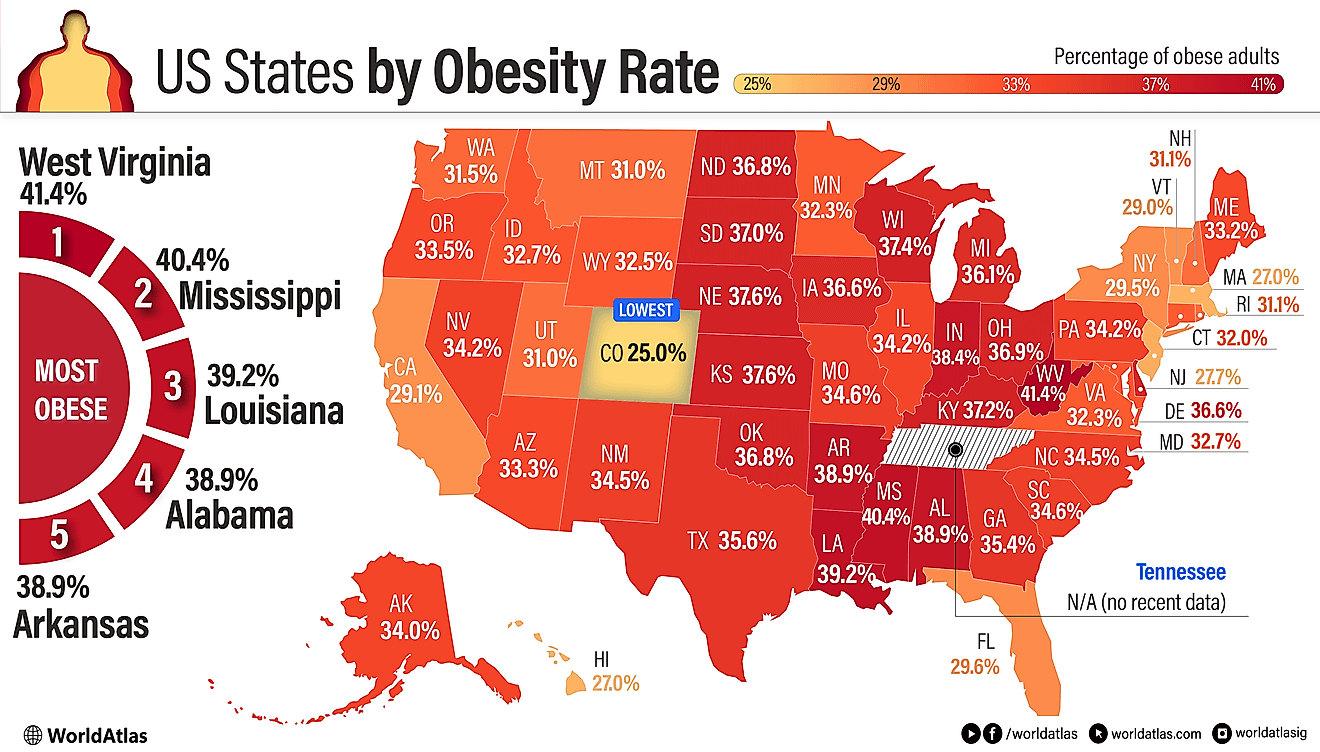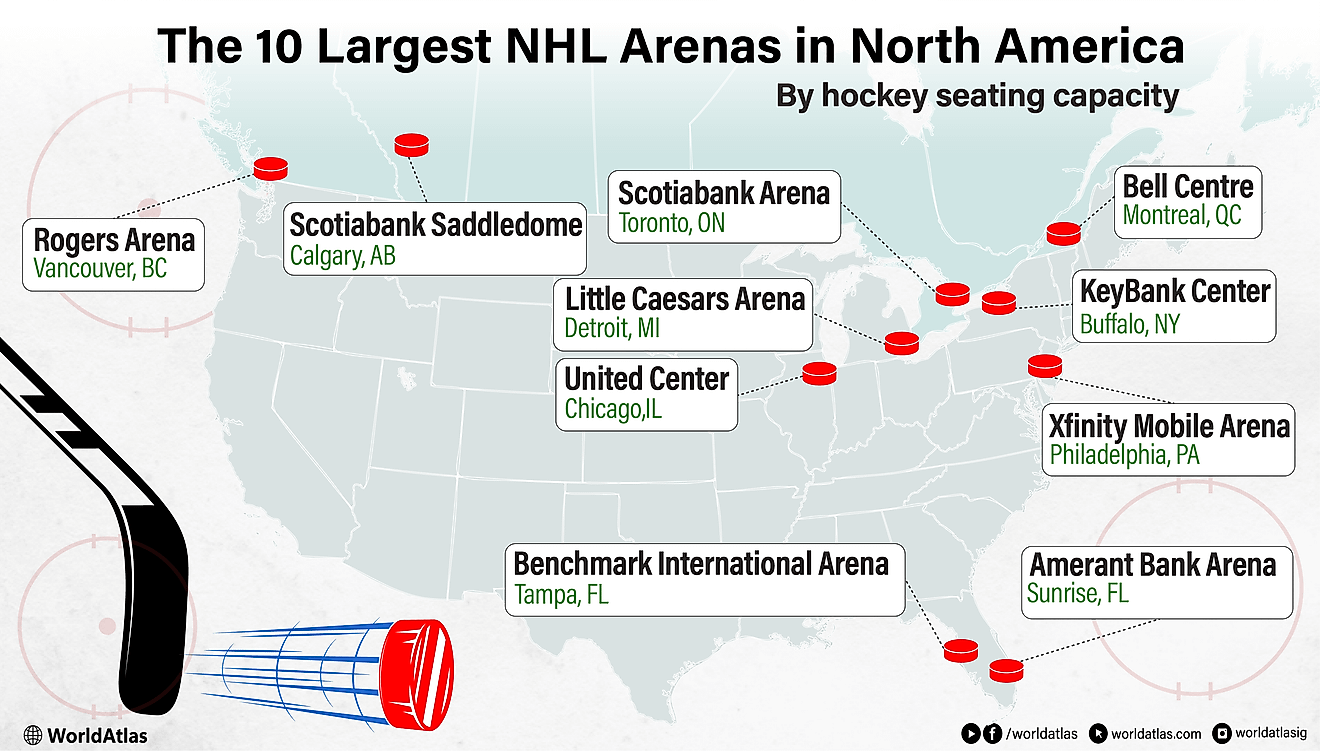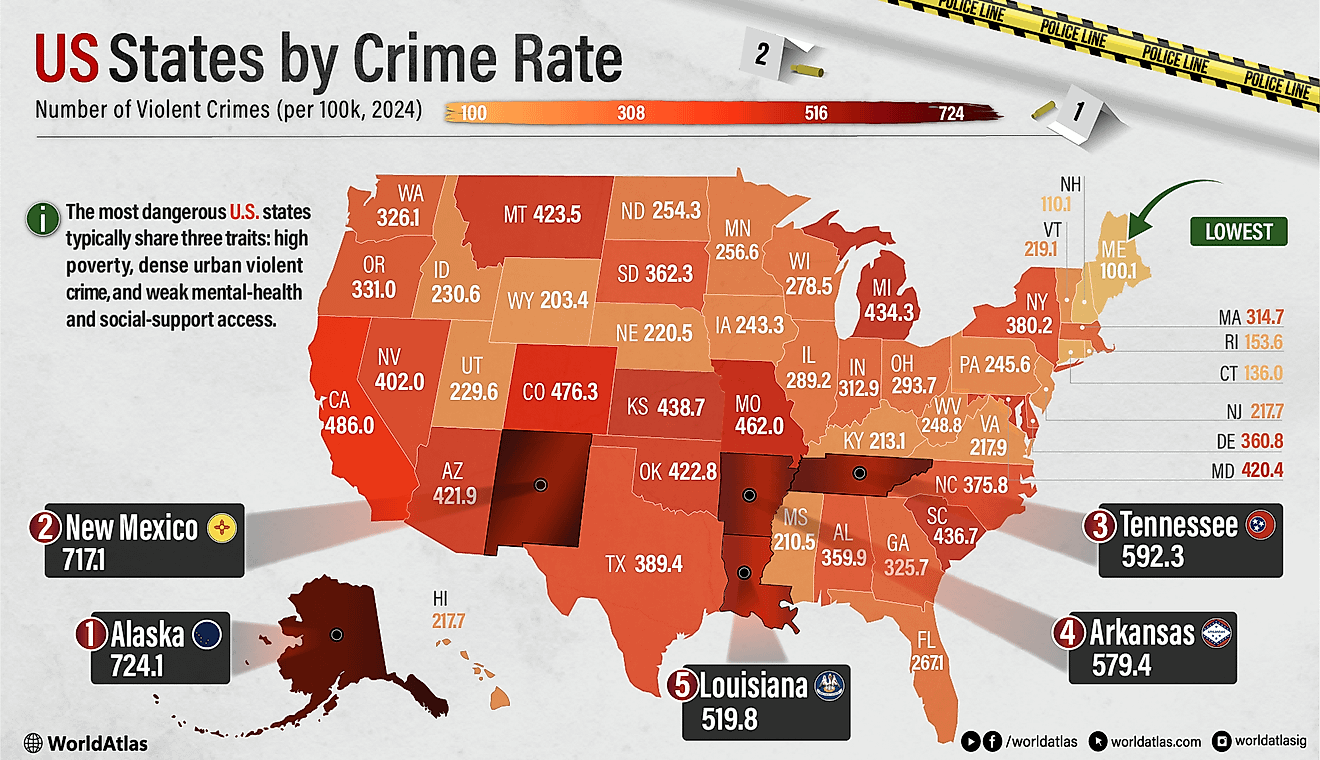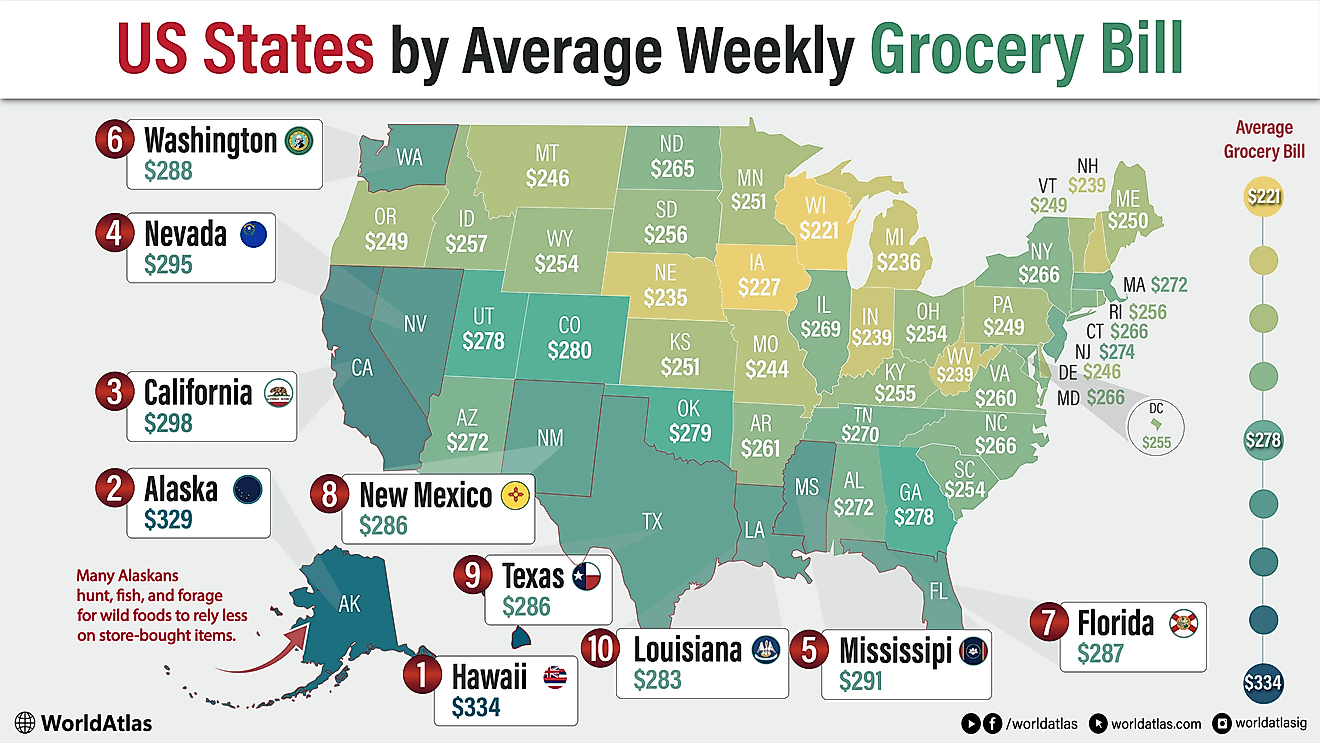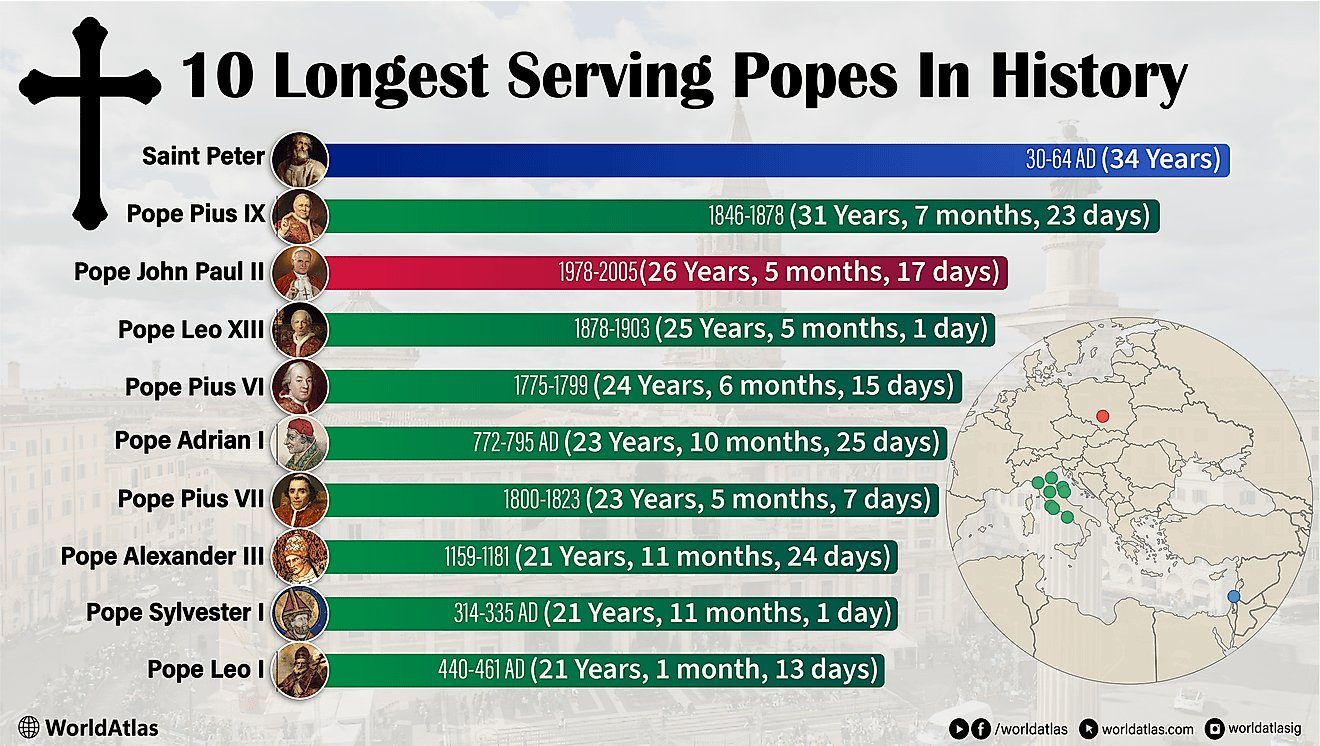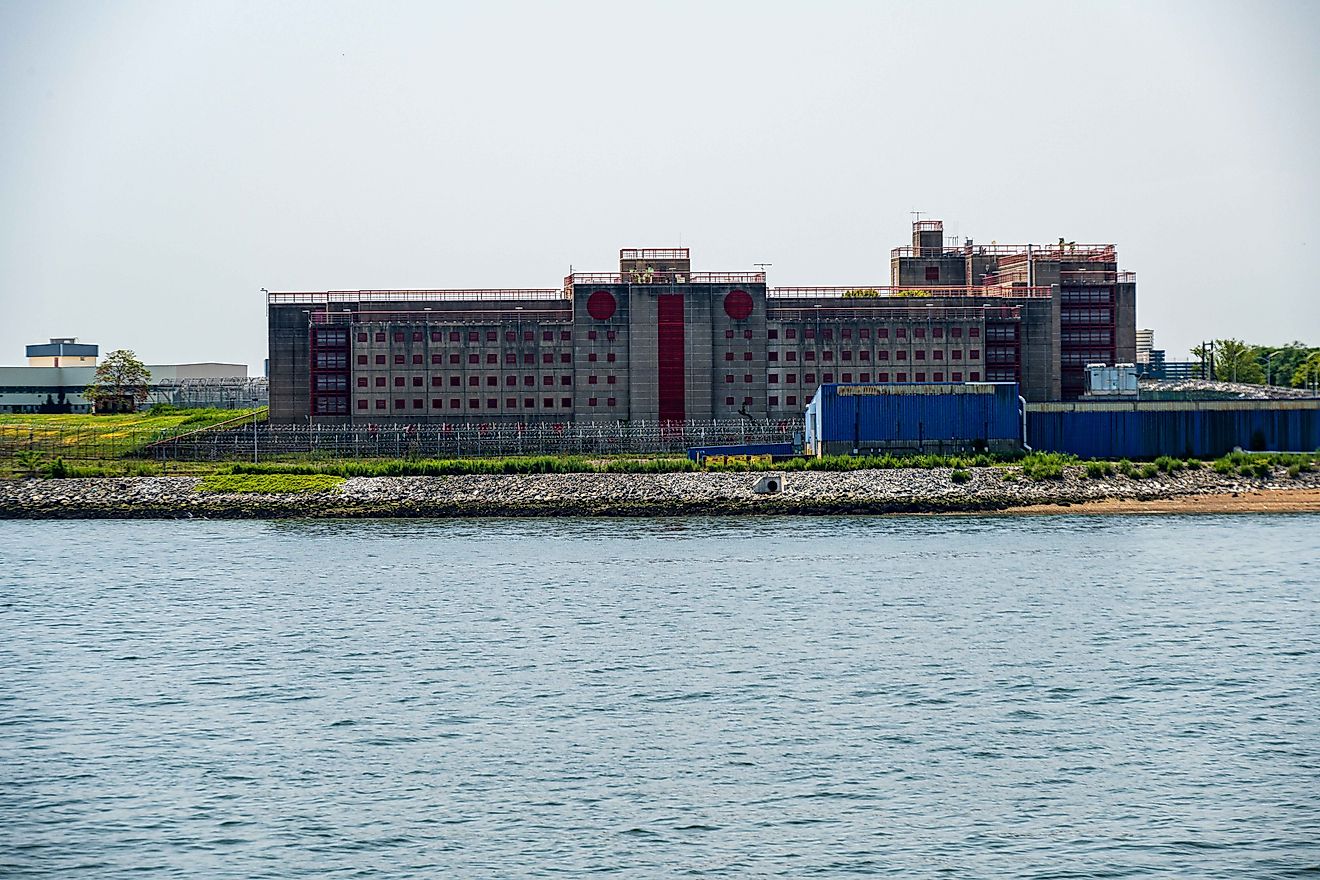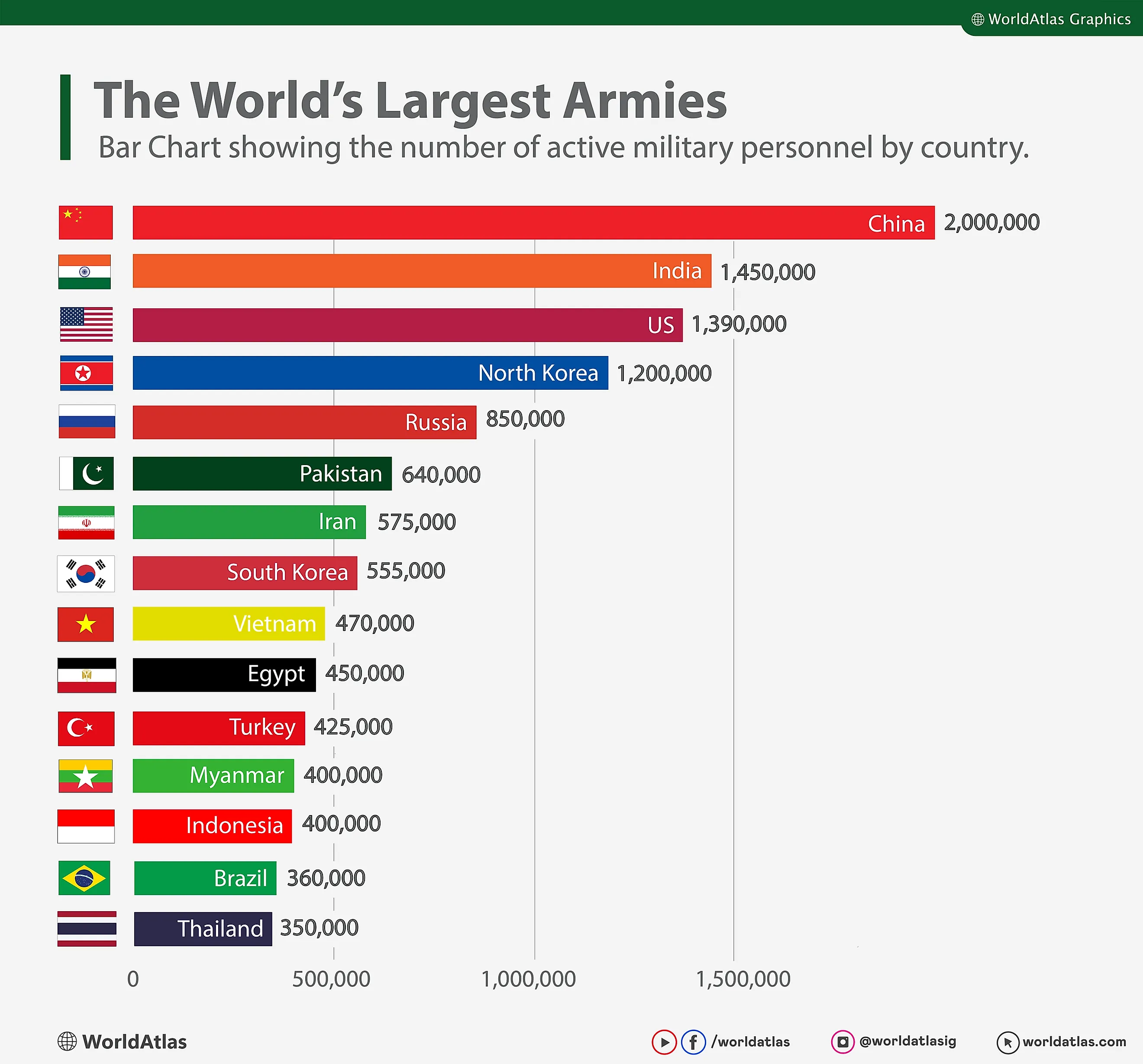
The Largest Armies in the World 2025
Active-duty headcounts offer the clearest single metric of military heft because these soldiers are permanently mobilised, continuously trained, and thus instantly deployable. Current global tallies, as of 2025, show a steep hierarchy. China's People's Liberation Army tops the table at about 2.04 million personnel, followed by India's 1.48 million and the United States' 1.32 million. North Korea, despite its small economy, sustains 1.28 million regulars, while Russia maintains roughly 1.13 million. The next tier, Pakistan, Iran, Ethiopia, South Korea, and Vietnam, ranges between 0.50 million and 0.66 million troops. These figures exclude reservists and paramilitary forces to isolate immediately available combat power. They also mask qualitative factors like logistics, technology, and doctrine, that ultimately convert manpower into coercive capability; nonetheless, sheer scale shapes strategic options, from deterrence signalling to multi-front endurance. Below are the 10 largest armies in the world.
The 10 Largest Armies In The World
| Rank | Country | Active military | Reserve military | Paramilitary | Total |
|---|---|---|---|---|---|
| 1 | China | 2,035,000 | 510,000 | 500,000 | 3,045,000 |
| 2 | India | 1,475,750 | 1,155,000 | 1,616,050 | 4,246,800 |
| 3 | United States | 1,315,600 | 797,200 | 0 | 2,112,800 |
| 4 | North Korea | 1,280,000 | 600,000 | 5,700,000 | 7,580,000 |
| 5 | Russia | 1,134,000 | 1,500,000 | 569,000 | 3,203,000 |
| 6 | Ukraine | 730,000 | 0 | 260,000 | 990,000 |
| 7 | Pakistan | 660,000 | 550,000 | 291,000 | 1,501,000 |
| 8 | Iran | 610,000 | 350,000 | 40,000 | 1,000,000 |
| 9 | Ethiopia | 503,000 | 0 | 0 | 503,000 |
| 10 | South Korea | 500,000 | 3,100,000 | 3,013,500 | 6,613,500 |
Jump to the full list of the armies of the world ranked by size
1. China - 2,035,000
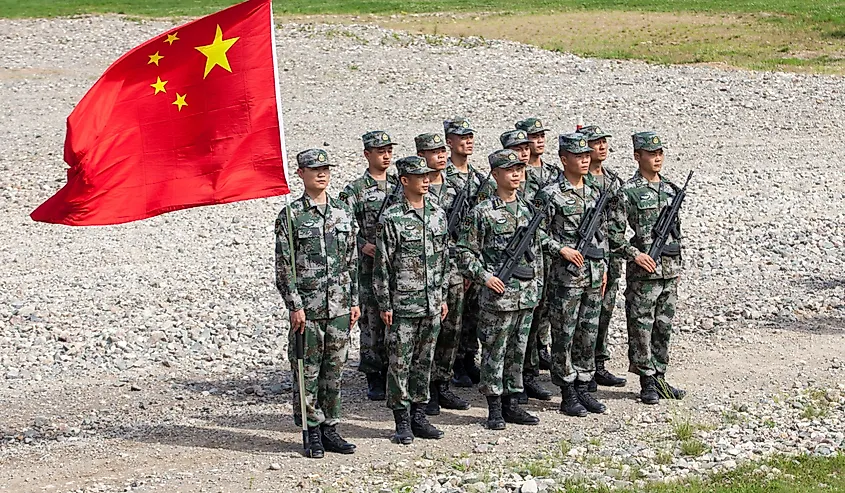
The People's Liberation Army (PLA) is the 2.0-million-strong military of the Chinese Communist Party and the People's Republic of China, organised into four services, Ground, Navy, Air and Rocket, and four specialised arms for space, cyber, information support, and joint logistics. Commanded by the Central Military Commission, chaired by Xi Jinping, its mission prioritises the defence of party rule, national sovereignty, and rapid power projection under an "active defence" doctrine. Five theatre commands integrate joint operations, while a hybrid system of conscription and volunteers supplies manpower; women and ethnic minorities serve across combat and technical roles. China's 2024 defence budget reached US$314 billion (1.7% of GDP), funding intensive modernisation from hypersonic missiles and blue-water carrier groups to advanced ISR satellites, positioning the PLA as a fast-rising global military power. Combat operations last occurred in 1979.
2. India - 1,475,750
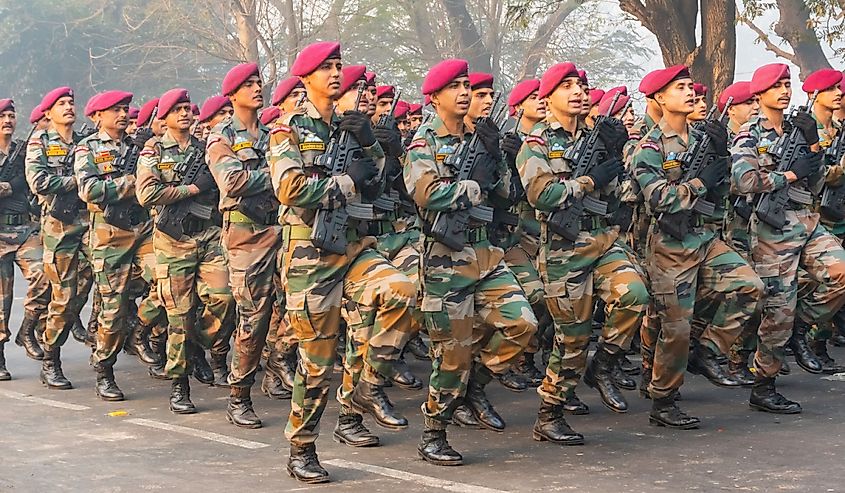
The Indian Army (IA) is the land-combat branch and core of India's armed forces, fielding roughly 1.48 million active-duty soldiers and about 0.96 million reservists, making it the world's second-largest standing army and the biggest all-volunteer force. Headquartered in New Delhi and commanded by the Chief of the Army Staff under the civilian President, it is organised into seven operational commands and a training command, with 40 divisions grouped under 14 corps. The IA's mission spans territorial defence, internal security, humanitarian relief, and extensive UN peacekeeping. Ongoing modernisation programmes, F-INSAS infantry kits, T-90S and indigenously built Arjun tanks, Prachand attack helicopters, Pinaka rockets and network-centric doctrines, aim to enhance mobility, lethality and joint interoperability, particularly along the disputed borders with China and Pakistan. Recent reforms add integrated theatre commands and light-armour brigades for mountain warfare.
3. United States - 1,315,600
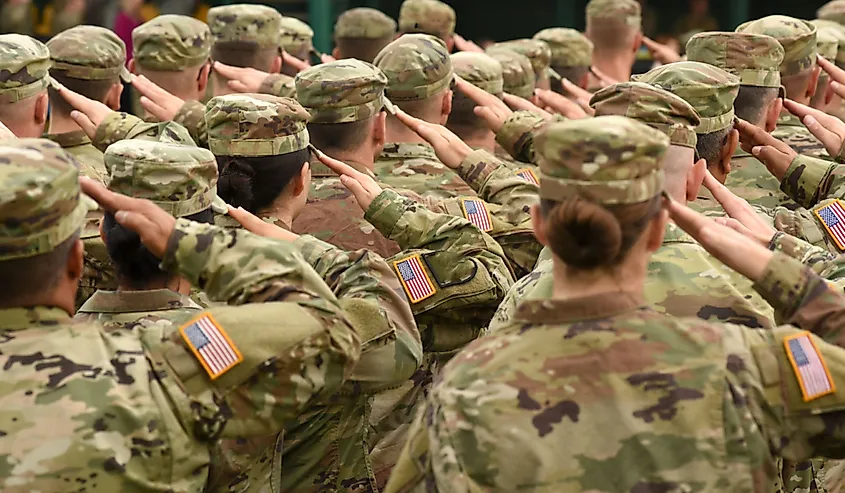
The United States Army, tracing its lineage to the Continental Army of 1775, fields about 1.3 million active personnel, the world's fourth-largest land force. Headquartered at the Pentagon and directed by a civilian secretary, it operates under the Department of Defense to deliver prompt, sustained land dominance across the full spectrum of conflict. Six regionally aligned combatant commands, 11 active divisions, elite Special Operations units, and a 4,400-aircraft fleet sustain a global posture from Korea and Europe to the Middle East. Post-2001 campaigns in Afghanistan and Iraq drove major reforms; current modernization priorities, long-range fires, next-generation armored vehicles, network warfare, air-missile defense, and soldier lethality aim to preserve overmatch against near-peer competitors into the 2030s future.
4. North Korea - 1,280,000
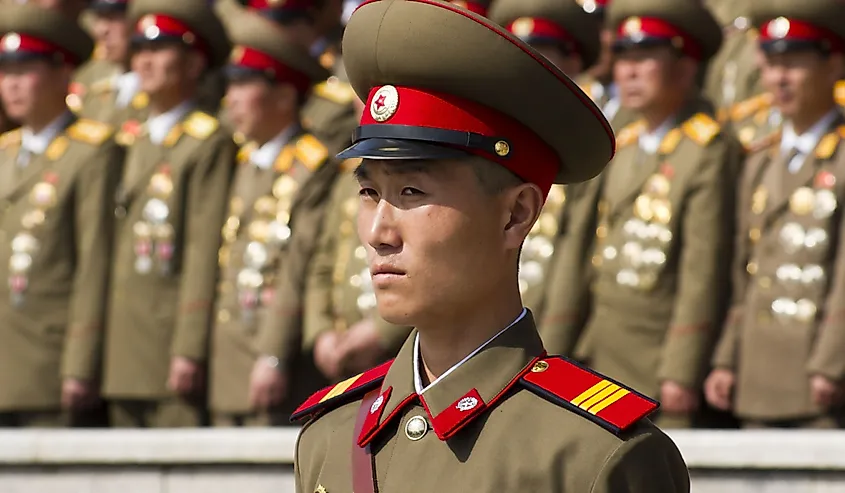
North Korea's Korean People's Army (KPA) is the world's fifth-largest standing force, fielding roughly 1.28 million active troops, 600,000 reservists, and several million paramilitary personnel. Founded in 1932 as an anti-Japanese guerrilla force and formalised in 1948, the KPA is the armed wing of the Workers' Party of Korea and is commanded by Kim Jong Un through the Central Military Commission and State Affairs Commission. It comprises five branches: Ground Force, Navy, Air and Anti-Air Force, Strategic Missile Force, and Special Operations Forces. Universal conscription drafts men for ten years and women to age 23, sustaining a militarised society that allocates an estimated $4 billion, about a quarter of GDP, to defence. Despite ageing equipment, the KPA offsets qualitative gaps with extensive artillery, the world's largest special-forces corps, ballistic missiles, chemical stockpiles, and an expanding nuclear arsenal today.
5. Russia - 1,134,000
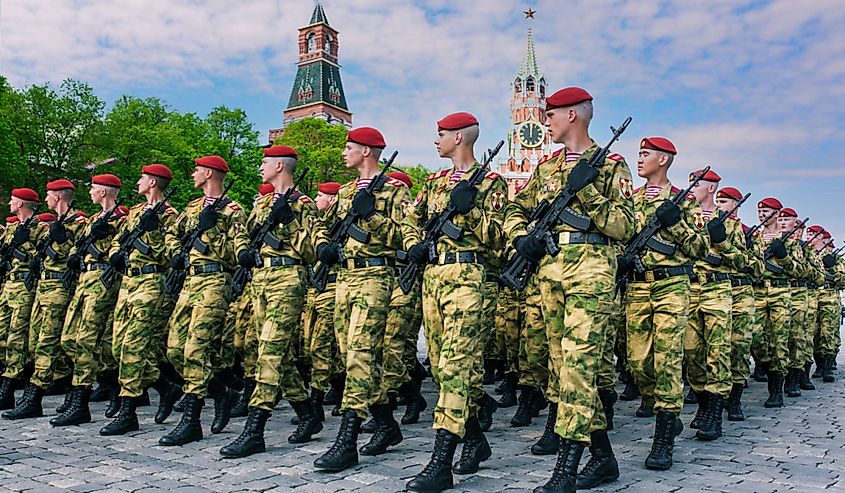
Russia's Armed Forces date to 1721, re-established after the USSR's collapse in 1992. Under President-Supreme Commander Vladimir Putin, they field around 1.13 million active troops and some 1.5 million reservists, making Russia the world's fourth-largest standing army. Conscription of men aged 18-27 lasts one year, though the force mixes draftees with contract volunteers and plans further expansion. The military is organised into three main services, Ground Forces, Navy, and Aerospace Forces, plus independent Strategic Rocket and Airborne Forces and a Special Operations Command. With a 2024 budget of about $149 billion USD (7 percent of GDP), Russia maintains the planet's biggest nuclear arsenal, a large ballistic-missile-submarine fleet, and strategic bombers. Modernisation has delivered new Yars ICBMs, Su-57 fighters and Borei submarines, yet combat in Ukraine exposed corruption, logistics gaps and high casualty rates, and strains on industrial output.
6. Ukraine - 730,000

Ukraine's Armed Forces (ZSU) were re-established in 1991 and have expanded massively since Russia's 2014 aggression. Today, about 730,000 active troops give Ukraine the world's sixth-largest military; martial-law mobilisations pushed wartime strength past 700,000. Eight branches, Ground Forces, Navy, Marine Corps, Air Force, Air-Assault, Special Operations, Territorial Defence and the new Unmanned Systems Force, operate a rapidly westernising arsenal funded by a 2024 defence budget of US $64.8 billion (37% of GDP) plus more than US $120 billion in foreign aid. Combat experience in Donbas and the full-scale 2022 Russian invasion has made the ZSU one of Europe's most battle-hardened armies, fielding a huge drone fleet, precision Western artillery, and captured Russian armour. Women serve in frontline roles, and NATO-standard training, logistics, and command systems are being introduced at speed under emergency conditions.
7. Pakistan - 660,000
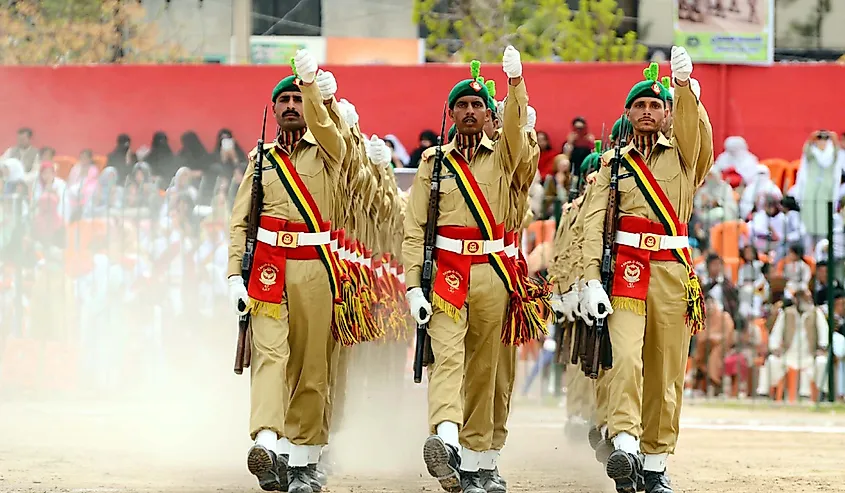
Pakistan's Army, established at independence in 1947, is the land-warfare component of the country's armed forces. With roughly 660,000 active soldiers, 550,000 reservists, and a 185,000-strong National Guard, it ranks among the world's ten largest standing armies. Headquartered at Rawalpindi, the all-volunteer force fields nine combat corps and a strategic missile command, operates Chinese-built Al-Khalid main-battle tanks, AH-1 Cobra gunships, and an expanding indigenous defence industry, and oversees the elite Special Service Group. It has fought four wars with India, guarded Saudi borders, battled insurgencies in Balochistan and along the Afghan frontier, and is one of the UN's leading peacekeepers. The Army wields significant political influence, having ruled Pakistan for almost half its history, yet also spearheads humanitarian relief and nationwide infrastructure projects, and continues modernising through Chinese defence cooperation.
8. Iran - 610,000
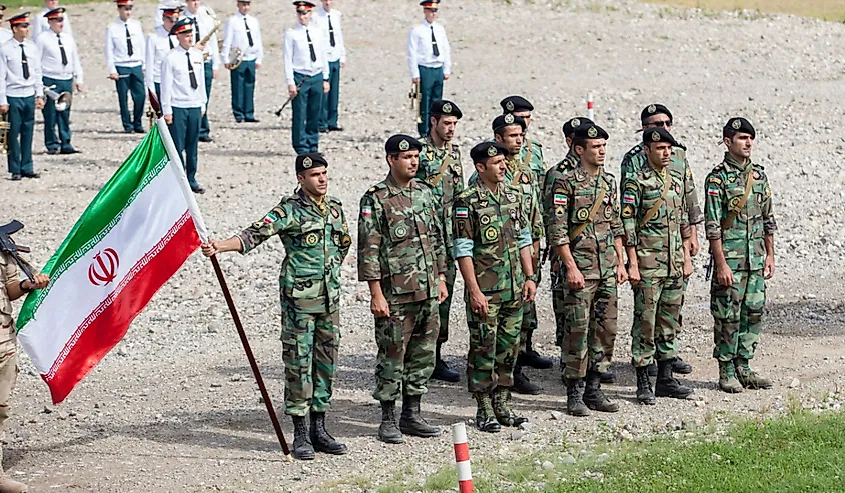
Iran fields the Middle East's biggest military, with about 610,000 active troops and a 350,000-strong reserve drawn by two-year conscription. Commanded ultimately by Supreme Leader Ali Khamenei, its unique dual structure pairs the regular Artesh with the politically powerful Islamic Revolutionary Guard Corps, while the national police adds internal security muscle. Sanctions forced Tehran to replace aging U.S. and Soviet kit with a vigorous home-grown industry that now turns out ballistic and cruise missiles, Shahed combat drones, Karrar tanks, Ghadir submarines and layered air-defence systems, and exports weapons as far afield as Russia and Venezuela. An annual defence budget of roughly US$16 billion (2.5% of GDP) supports extensive cyberwarfare units and a missile force able to strike 2,000 km. Iranian forces and proxies are currently active in Syria, Iraq, Yemen, and against Israel.
9. Ethiopia - 503,000
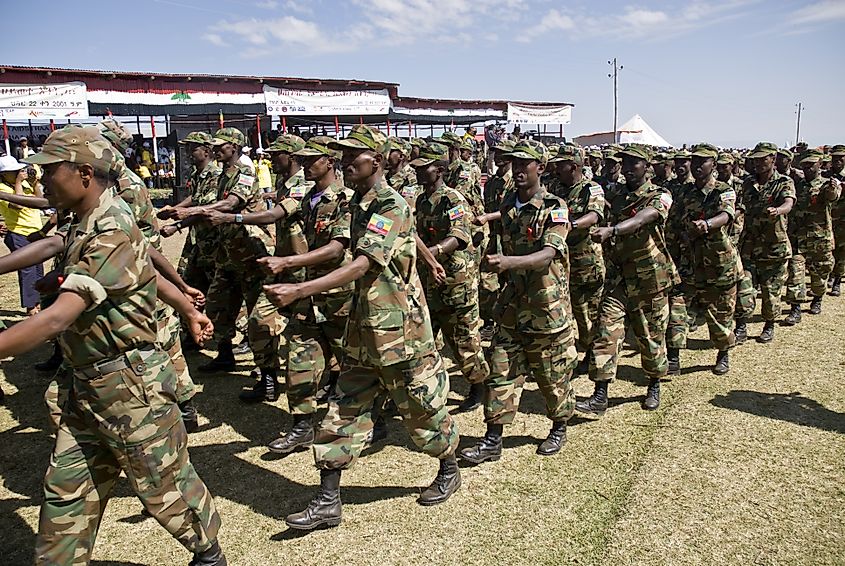
Ethiopia fields sub-Saharan Africa's third-largest military. The Ethiopian National Defense Force (ENDF) numbers about 503,000 active soldiers and a militia network, organised into ten regional commands under Field Marshal Birhanu Jula and ultimately Prime Minister Abiy Ahmed. It comprises the army, the air force, and a nascent navy headquarters in Bahir Dar, supported by a defence-industry sector and foreign suppliers such as China, Russia, and Turkey. Annual spending is roughly US$1.8 billion, 0.3% of GDP, but long service traditions give the force combat experience. Born in the early 1900s Imperial army, the ENDF repelled Italian colonialism at Adwa, fought in Korea, Congo, the Ogaden and Eritrean wars, and has provided UN and AU peacekeepers. Since 2020, it has led controversial operations in Tigray while containing Islamist threats along the Somali frontier region.
10. South Korea - 500,000
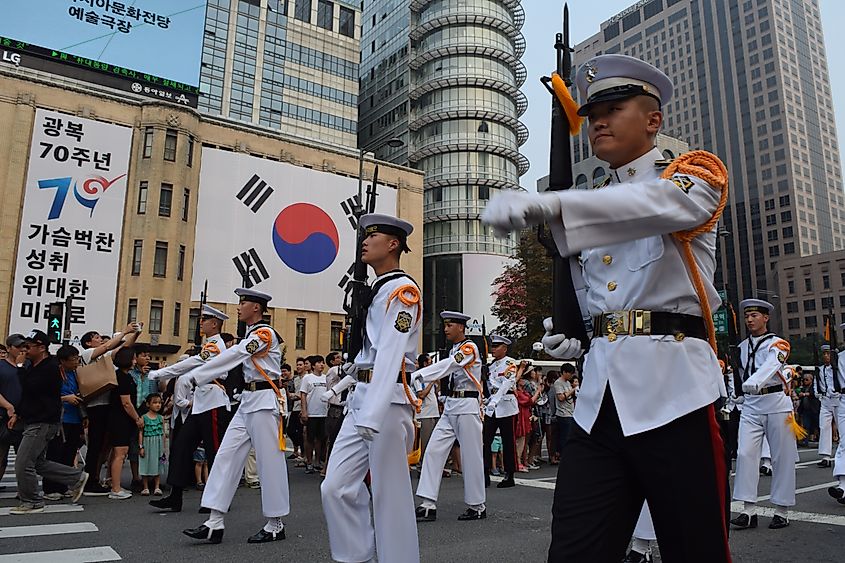
South Korea's Republic of Korea Army (ROKA) fields 365,000 active soldiers, the world's eighth-largest land force, backed by universal 18-month conscription and 3.1 million reservists. Created in 1948 from US-trained constabulary units, it fought the Korean War, sent 320,000 troops to Vietnam, and has deployed to Iraq, Afghanistan, and U.N. peacekeeping missions. ROKA is organised under the Ground Operations Command with six corps and 34 divisions tailored for the peninsula's mountainous terrain and the 950,000-strong North Korean ground force. Modernisation since the 1990s has produced the indigenous K2 Black Panther main battle tank, K9 self-propelled howitzer, K21 infantry fighting vehicle, "Pegasus" SAM, and network-centric "Warrior Platform" kit, while joint plans with the U.S. envisage full operational control transfer by 2025. The headquarters are in Gyeryong, where President Lee Jae-Myung is the commander-in-chief of the force.
NATO Army - 3.5 million
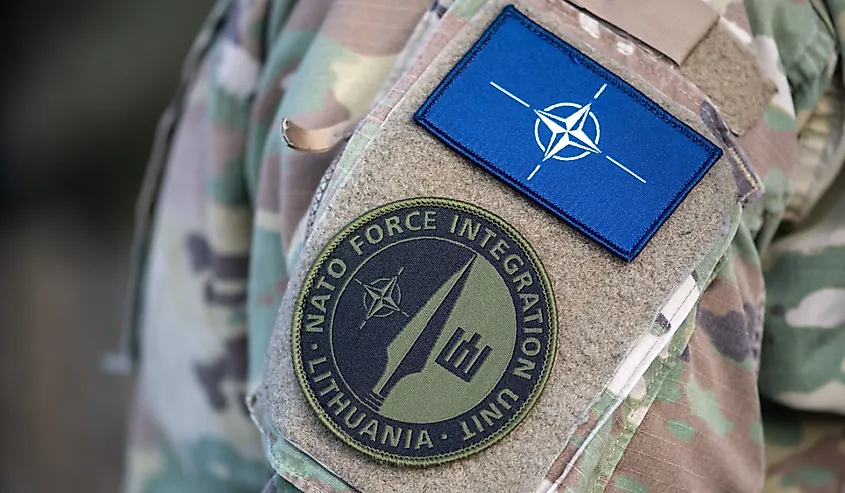
North Atlantic Treaty Organization (NATO) - founded in 1949 and now counting 32 European and North American members - is not one national army but the world's largest integrated force, pooling about 3.44 million men and women under a common command. Member states span 25 million km2 and 973 million people; together they supply roughly 55% of global defence spending, $1.47 trillion USD in 2024 (the United States and Germany each finance 16% of NATO's shared budgets, while every nation funds and owns its own troops). The alliance's political seat is in Brussels; Supreme Headquarters Allied Powers Europe (SHAPE) directs operations from Mons, Belgium, through two strategic commands: Allied Command Operations and Allied Command Transformation.
NATO's Article 5 pledge - an attack on one is an attack on all - has been invoked once, after 11 September 2001. Since the Cold War, the bloc has fielded major missions in Bosnia, Kosovo, Afghanistan, Iraq, Libya, the Gulf of Aden, and, since Russia's 2014 seizure of Crimea and its 2022 invasion of Ukraine, a reinforced Forward Presence of multinational battlegroups along its eastern frontier. Members have committed to spending at least 2% of GDP on defence; a record 23 nations are expected to meet that mark in 2024.
Enlargement, most recently Sweden in 2024, has carried NATO from its 12 founders to 32 members, while programmes such as Partnership for Peace and dozens of bilateral agreements extend training and interoperability to partners on every continent, giving the alliance unparalleled global reach despite being a strictly Euro-Atlantic treaty.
The Armies Of The World Ranked By Size
| Rank | Country | Active military | Reserve military | Paramilitary | Total |
|---|---|---|---|---|---|
| 1 | China | 2,035,000 | 510,000 | 500,000 | 3,045,000 |
| 2 | India | 1,475,750 | 1,155,000 | 1,616,050 | 4,246,800 |
| 3 | United States | 1,315,600 | 797,200 | 0 | 2,112,800 |
| 4 | North Korea | 1,280,000 | 600,000 | 5,700,000 | 7,580,000 |
| 5 | Russia | 1,134,000 | 1,500,000 | 569,000 | 3,203,000 |
| 6 | Ukraine | 730,000 | 0 | 260,000 | 990,000 |
| 7 | Pakistan | 660,000 | 550,000 | 291,000 | 1,501,000 |
| 8 | Iran | 610,000 | 350,000 | 40,000 | 1,000,000 |
| 9 | Ethiopia | 503,000 | 0 | 0 | 503,000 |
| 10 | South Korea | 500,000 | 3,100,000 | 3,013,500 | 6,613,500 |
| 11 | Vietnam | 450,000 | 5,000,000 | 40,000 | 5,490,000 |
| 12 | Egypt | 438,500 | 479,000 | 397,000 | 1,314,500 |
| 13 | Indonesia | 404,500 | 400,000 | 290,250 | 1,094,750 |
| 14 | Brazil | 374,500 | 1,415,000 | 395,000 | 2,184,500 |
| 15 | Thailand | 360,850 | 200,000 | 138,700 | 699,550 |
| 16 | Turkey | 355,200 | 378,700 | 160,800 | 894,700 |
| 17 | Eritrea | 301,750 | 0 | 0 | 301,750 |
| 18 | Mexico | 287,000 | 81,500 | 136,900 | 505,400 |
| 19 | Colombia | 269,000 | 34,950 | 165,050 | 469,000 |
| 20 | Sri Lanka | 262,500 | 5,500 | 94,050 | 362,050 |
| 21 | Saudi Arabia | 257,000 | 0 | 24,500 | 281,500 |
| 22 | Japan | 247,150 | 55,900 | 14,800 | 317,850 |
| 23 | France | 202,000 | 38,500 | 95,100 | 335,600 |
| 24 | Morocco | 195,800 | 150,000 | 50,000 | 395,800 |
| 25 | Iraq | 193,000 | 0 | 266,000 | 459,000 |
| 26 | Germany | 179,850 | 34,100 | 0 | 213,950 |
| 27 | Afghanistan | 172,000 | 0 | 0 | 172,000 |
| 28 | Bangladesh | 171,250 | 0 | 63,900 | 235,150 |
| 29 | Israel | 169,500 | 465,000 | 8,000 | 642,500 |
| 30 | Taiwan | 169,000 | 1,657,000 | 11,800 | 1,837,800 |
| 31 | Poland | 164,100 | 37,500 | 14,300 | 215,900 |
| 32 | Italy | 161,850 | 14,500 | 178,600 | 354,950 |
| 33 | Philippines | 146,250 | 131,000 | 80,700 | 357,950 |
| 34 | Nigeria | 143,000 | 0 | 80,000 | 223,000 |
| 35 | United Kingdom | 141,100 | 70,450 | 0 | 211,550 |
| 36 | Algeria | 139,000 | 150,000 | 187,200 | 476,200 |
| 37 | Myanmar | 134,000 | 0 | 70,000 | 204,000 |
| 38 | Greece | 132,000 | 289,000 | 7,400 | 428,400 |
| 39 | Democratic Republic of the Congo | 128,350 | 0 | 0 | 128,350 |
| 40 | Cambodia | 124,300 | 0 | 67,000 | 191,300 |
| 41 | Venezuela | 123,000 | 8,000 | 220,000 | 351,000 |
| 42 | Spain | 122,200 | 13,800 | 87,450 | 223,450 |
| 43 | Malaysia | 113,000 | 51,600 | 267,200 | 431,800 |
| 44 | Angola | 107,000 | 0 | 10,000 | 117,000 |
| 45 | Sudan | 104,300 | 0 | 60,000 | 164,300 |
| 46 | Jordan | 100,500 | 65,000 | 15,000 | 180,500 |
| 47 | Nepal | 96,600 | 0 | 15,000 | 111,600 |
| 48 | South Sudan | 90,000 | 0 | 0 | 90,000 |
| 49 | Peru | 81,000 | 188,000 | 77,000 | 346,000 |
| 50 | Argentina | 72,100 | 0 | 31,250 | 103,350 |
| 51 | Romania | 69,900 | 55,000 | 57,000 | 181,900 |
| 52 | South Africa | 69,200 | 15,050 | 0 | 84,250 |
| 53 | Chile | 68,500 | 19,100 | 44,700 | 132,300 |
| 54 | Azerbaijan | 68,200 | 300,000 | 15,000 | 383,200 |
| 55 | United Arab Emirates | 63,000 | 0 | 0 | 63,000 |
| 56 | Canada | 62,300 | 29,100 | 5,800 | 97,200 |
| 57 | Lebanon | 60,000 | 0 | 20,000 | 80,000 |
| 58 | Australia | 58,540 | 21,450 | 0 | 79,990 |
| 59 | Dominican Republic | 56,800 | 0 | 15,000 | 71,800 |
| 60 | Singapore | 51,000 | 252,500 | 7,400 | 310,900 |
| 61 | Cuba | 49,000 | 39,000 | 26,500 | 114,500 |
| 62 | Belarus | 48,600 | 289,500 | 110,000 | 448,100 |
| 63 | Uzbekistan | 48,000 | 0 | 20,000 | 68,000 |
| 64 | Uganda | 45,000 | 10,000 | 1,400 | 56,400 |
| 65 | Armenia | 42,900 | 210,000 | 4,300 | 257,200 |
| 66 | Oman | 42,600 | 0 | 4,400 | 47,000 |
| 67 | Yemen | 40,000 | 0 | 0 | 40,000 |
| 68 | Ecuador | 39,600 | 118,000 | 500 | 158,100 |
| 69 | Niger | 39,100 | 0 | 48,000 | 87,100 |
| 70 | Kazakhstan | 39,000 | 0 | 31,500 | 70,500 |
| 71 | Bulgaria | 36,950 | 3,000 | 0 | 39,950 |
| 72 | Turkmenistan | 36,500 | 0 | 20,000 | 56,500 |
| 73 | Tunisia | 35,800 | 0 | 12,000 | 47,800 |
| 74 | Bolivia | 34,100 | 0 | 37,100 | 71,200 |
| 75 | Netherlands | 33,650 | 6,350 | 6,800 | 46,800 |
| 76 | Chad | 33,250 | 0 | 11,900 | 45,150 |
| 77 | Rwanda | 33,000 | 0 | 2,000 | 35,000 |
| 78 | Hungary | 32,150 | 20,000 | 0 | 52,150 |
| 79 | Burundi | 30,050 | 0 | 1,000 | 31,050 |
| 80 | Laos | 29,100 | 0 | 100,000 | 129,100 |
| 81 | Zimbabwe | 29,000 | 0 | 21,800 | 50,800 |
| 82 | Serbia | 28,150 | 50,150 | 3,700 | 82,000 |
| 83 | Côte d'Ivoire | 27,400 | 0 | 0 | 27,400 |
| 84 | Tanzania | 27,000 | 80,000 | 1,400 | 108,400 |
| 85 | Czech Republic | 26,600 | 0 | 0 | 26,600 |
| 86 | Portugal | 26,050 | 23,500 | 22,820 | 72,370 |
| 87 | Cameroon | 25,400 | 0 | 9,000 | 34,400 |
| 88 | Norway | 25,400 | 40,000 | 0 | 65,400 |
| 89 | Kenya | 24,100 | 0 | 5,000 | 29,100 |
| 90 | Finland | 23,850 | 233,000 | 12,000 | 268,850 |
| 91 | Belgium | 23,500 | 5,900 | 0 | 29,400 |
| 92 | Austria | 22,200 | 109,200 | 0 | 131,400 |
| 93 | Switzerland | 21,300 | 196,450 | 0 | 217,750 |
| 94 | Uruguay | 21,100 | 0 | 1,400 | 22,500 |
| 95 | Mali | 21,000 | 0 | 20,000 | 41,000 |
| 96 | Georgia | 20,650 | 0 | 5,400 | 26,050 |
| 97 | Ghana | 19,000 | 0 | 0 | 19,000 |
| 98 | Guatemala | 18,050 | 63,850 | 25,000 | 106,900 |
| 99 | Kuwait | 17,500 | 23,700 | 7,100 | 48,300 |
| 100 | Zambia | 17,100 | 3,000 | 1,400 | 21,500 |
| 101 | Croatia | 16,800 | 2,100 | 0 | 18,900 |
| 102 | Qatar | 16,500 | 0 | 5,000 | 21,500 |
| 103 | Lithuania | 16,100 | 12,950 | 18,400 | 47,450 |
| 104 | Mauritania | 15,850 | 0 | 5,000 | 20,850 |
| 105 | Slovakia | 15,850 | 0 | 0 | 15,850 |
| 106 | Honduras | 14,950 | 60,000 | 8,000 | 82,950 |
| 107 | Sweden | 14,850 | 21,500 | 21,500 | 57,850 |
| 108 | Paraguay | 13,950 | 164,500 | 14,800 | 193,250 |
| 109 | Somalia | 13,900 | 0 | 0 | 13,900 |
| 110 | Togo | 13,750 | 0 | 5,000 | 18,750 |
| 111 | Senegal | 13,600 | 0 | 5,000 | 18,600 |
| 112 | Madagascar | 13,500 | 0 | 8,100 | 21,600 |
| 113 | Denmark | 13,100 | 44,200 | 0 | 57,300 |
| 114 | Benin | 12,300 | 0 | 4,800 | 17,100 |
| 115 | Cyprus | 12,000 | 50,000 | 250 | 62,250 |
| 116 | Nicaragua | 12,000 | 0 | 0 | 12,000 |
| 117 | Namibia | 11,600 | 0 | 6,000 | 17,600 |
| 118 | Mozambique | 11,200 | 0 | 0 | 11,200 |
| 119 | Kyrgyzstan | 10,900 | 0 | 9,500 | 20,400 |
| 120 | Malawi | 10,700 | 0 | 4,200 | 14,900 |
| 121 | Bosnia and Herzegovina | 10,650 | 6,000 | 0 | 16,650 |
| 122 | Republic of the Congo | 10,000 | 0 | 3,500 | 13,500 |
| 123 | Guinea | 9,700 | 0 | 2,600 | 12,300 |
| 124 | Mongolia | 9,700 | 137,000 | 7,500 | 154,200 |
| 125 | Ireland | 9,500 | 4,050 | 0 | 13,550 |
| 126 | Central African Republic | 9,150 | 0 | 1,000 | 10,150 |
| 127 | Botswana | 9,000 | 0 | 0 | 9,000 |
| 128 | Tajikistan | 8,800 | 20,000 | 7,500 | 36,300 |
| 129 | New Zealand | 8,700 | 3,270 | 0 | 11,970 |
| 130 | Sierra Leone | 8,500 | 0 | 0 | 8,500 |
| 131 | Djibouti | 8,450 | 0 | 4,650 | 13,100 |
| 132 | Bahrain | 8,200 | 0 | 11,260 | 19,460 |
| 133 | North Macedonia | 8,000 | 4,850 | 7,600 | 20,450 |
| 134 | Albania | 7,500 | 0 | 0 | 7,500 |
| 135 | Brunei | 7,200 | 700 | 450 | 8,350 |
| 136 | Estonia | 7,100 | 41,200 | 21,200 | 69,500 |
| 137 | Burkina Faso | 7,000 | 0 | 4,450 | 11,450 |
| 138 | Latvia | 6,600 | 16,000 | 0 | 22,600 |
| 139 | Slovenia | 6,200 | 950 | 0 | 7,150 |
| 140 | Jamaica | 5,950 | 2,580 | 0 | 8,530 |
| 141 | Moldova | 5,150 | 58,000 | 900 | 64,050 |
| 142 | Gabon | 4,700 | 0 | 2,000 | 6,700 |
| 143 | Guinea-Bissau | 4,450 | 0 | 0 | 4,450 |
| 144 | Gambia | 4,100 | 0 | 0 | 4,100 |
| 145 | Trinidad and Tobago | 4,050 | 0 | 0 | 4,050 |
| 146 | Fiji | 4,040 | 6,000 | 0 | 10,040 |
| 147 | Maldives | 4,000 | 0 | 0 | 4,000 |
| 148 | Papua New Guinea | 4,000 | 0 | 0 | 4,000 |
| 149 | Guyana | 3,400 | 670 | 0 | 4,070 |
| 150 | Kosovo | 3,000 | 0 | 0 | 3,000 |
| 151 | Montenegro | 2,885 | 2,800 | 4,100 | 9,785 |
| 152 | El Salvador | 2,600 | 9,900 | 2,600 | 15,100 |
| 153 | Timor-Leste | 2,250 | 0 | 0 | 2,250 |
| 154 | Liberia | 2,010 | 0 | 0 | 2,010 |
| 155 | Lesotho | 2,000 | 0 | 0 | 2,000 |
| 156 | Suriname | 1,840 | 0 | 0 | 1,840 |
| 157 | Equatorial Guinea | 1,750 | 0 | 0 | 1,750 |
| 158 | Malta | 1,700 | 260 | 0 | 1,960 |
| 159 | Bahamas | 1,500 | 0 | 0 | 1,500 |
| 160 | Belize | 1,500 | 700 | 150 | 2,350 |
| 161 | Cape Verde | 1,200 | 0 | 0 | 1,200 |
| 162 | Luxembourg | 900 | 0 | 600 | 1,500 |
| 163 | Haiti | 700 | 0 | 9,000 | 9,700 |
| 164 | Barbados | 610 | 430 | 0 | 1,040 |
| 165 | Seychelles | 420 | 0 | 0 | 420 |
| 166 | Antigua and Barbuda | 200 | 80 | 0 | 280 |
| 167 | Costa Rica | 0 | 0 | 9,950 | 9,950 |
| 168 | Iceland | 0 | 0 | 250 | 250 |
| 169 | Libya | 0 | 0 | 0 | 0 |
| 170 | Mauritius | 0 | 0 | 2,550 | 2,550 |
| 171 | Palestine | 0 | 0 | 0 | 0 |
| 172 | Panama | 0 | 0 | 27,700 | 27,700 |
| 173 | Syria | 0 | 0 | 0 | 0 |
Based on information gathered by the ISS (International Institute for Strategic Studies)
